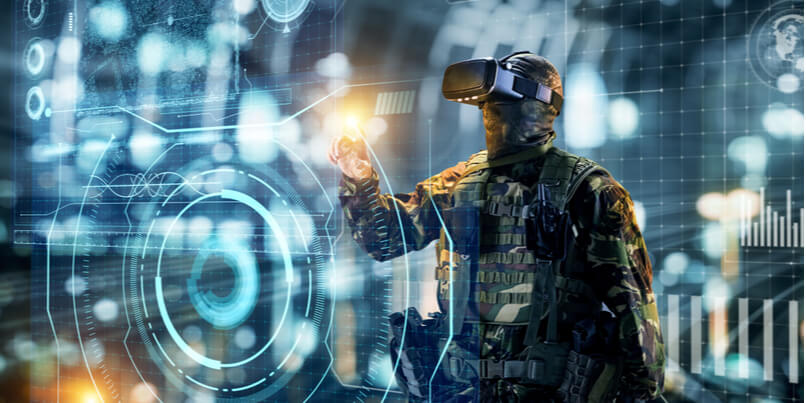 Simulator detector technology offers substantial and tangible benefits across all stages and levels of CBRNe training - whether it is being used to train new operators, to provide more experienced personnel with the opportunity to refresh their skills, or as a way to trial or familiarize with new equipment.
Simulator detector technology offers substantial and tangible benefits across all stages and levels of CBRNe training - whether it is being used to train new operators, to provide more experienced personnel with the opportunity to refresh their skills, or as a way to trial or familiarize with new equipment.
The rise in the popularity of simulation training over the past several decades has been aided in no small part by significant advancements in the technology and processing power that underpins it.
From its beginnings in the world of aviation in the early 1900s - where halved wooden barrels were pieced together to create a simulated swinging cockpit - we are now at a stage where super-immersive environments, sophisticated virtual reality and hyper-realism are the norm.
The highly realistic and hands-on nature of simulation-based training provides an invaluable way to put core CBRNe knowledge and skills to the test in true-to-life scenarios.
The emergence of new next-generation simulator technologies such as the Radiation Field Training Simulator (RaFTS) and the Saab Gamer CBRN Interface are also continuing to transform the CBRNe training landscape.
Hyper-realistic CBRNe training
For CBRNe instructors, having the ability to create realistic and compelling training scenarios is a powerful asset in helping to hone their students' situational awareness and strengthen understanding of core operational procedures.
With the help of intelligent, high-fidelity simulation training systems such as PlumeSIM and PlumeSIM-SMART trainers have the opportunity to create exercise environments that replicate the exact conditions and challenges of real life incidents.
If a table-top training option is preferred, the use of simple gamepad controllers makes it quick and easy for trainees to maneuver themselves around an on-screen display of the training area.
When desired, the same exercises can then be shifted to a live field training environment, with the help of GPS enabled player units that connect via short range radio link to a control base.
Whatever the scenario, instructors have the flexibility to determine every detail - be it the specific chemical or nuclide, the release time, the latitude and longitude, the release rate, the source height, the source radius or the release duration.
The changing nature of the environment (shifts in wind direction, varying meteorological conditions, the release of single or multiple sources, plume dispersion etc) can also be simply and easily adjusted throughout the exercise.
Powerful After Action Review (AAR) provides instructors with the facility to record their students' actions and decisions in real-time.
The data can then also be exported at the end of the exercise to help identify errors, evaluate student performance and maximize learning opportunities.
Hands-on CBRNe training
Building familiarity and confidence in the use of equipment is a vital element of effective CBRNe training.
When setting up an exercise using either PlumeSIM or PlumeSIM-SMART, instructors can select the exact equipment that they want to be used in a given scenario, they can allocate specific items of equipment to individual team members and they can simulate all the possible errors that the trainee might make when using their equipment.
From a maintenance perspective, replacing the use of actual detectors with their simulator equivalents offers tangible benefits - removing the need to calibrate, maintain or repair vital equipment and keeping real devices free from the risk of wear and tear.
Procurement options
There may be some cases where a subscription-based training solution is a better option than purchasing a CBRNe simulator training system outright.
With a subscription service, CBRNe trainers have the flexibility to access the exact training that they need, when they need it, enabling them to plan a clear training budget and to spread the cost over a specific time-frame.
A subscription-based approach can also provide the opportunity for CBRNe trainers to test the functionality of a new simulator training system before committing to an outright purchase.
The use of simulators and simulation-based training systems are invaluable in helping CBRNe personnel to hone their abilities and develop new skills in safe and controlled environments with zero personal risk.
Simulator detectors are widely acknowledged as being an invaluable aid in teaching the CBRNe fundamentals - and when an instructor wishes to take things further, the use of simulator training systems can take the realism, immersiveness and practicality of the training environment to a whole new level.






